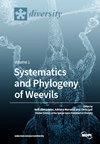不同空间尺度下城市鸟类物种存在与分布的归一化植被指数
IF 2.1
3区 生物学
Q2 BIODIVERSITY CONSERVATION
引用次数: 0
摘要
鸟类是城市景观的重要特征,具有减轻生理和心理压力、审美愉悦和教育等重要生态功能。了解城市鸟类的种群数量对它们的成功保护至关重要。归一化植被指数(NDVI)是一种用作绿色覆盖代理的遥感度量。本文对希腊卡瓦拉城市绿地中15种鸟类的丰度进行了估算,并在50 m、200 m和500 m圆形缓冲带3种不同空间尺度的19个调查站计算了NDVI。NDVI显著影响了13种植物的丰度。50 m缓冲带最多可预测4种,200 m缓冲带最多可预测7种,500 m缓冲带最多可预测4种。9种(城市居民)的丰度随NDVI的增加而减少,6种(城市利用)的丰度随NDVI的增加而增加。这些发现表明,NDVI是城市地区鸟类物种丰富度的可靠预测指标。更重要的是,在不同的空间尺度上确定鸟类丰度和NDVI关联可以更好地描述。这些发现可用于城市鸟类种群的预测和监测,并可纳入城市保护管理计划。本文章由计算机程序翻译,如有差异,请以英文原文为准。
Normalized Difference Vegetation Index as a Proxy of Urban Bird Species Presence and Distribution at Different Spatial Scales
Birds are important features of the urban landscape, offering valuable ecosystem services, such as physiological and psychological stress reduction, aesthetic pleasure, and education. Knowing the populations of bird species in cities is important for their successful conservation. The normalized difference vegetation index (NDVI) is a remotely sensed metric used as a green cover proxy. We estimated the abundance of 15 bird species in the urban green spaces of Kavala, Greece, and calculated the NDVI at 19 survey stations with three different spatial scales: 50 m, 200 m, and 500 m circular buffers. NDVI was shown to significantly affect the abundance of 13 species. The 50 m buffer best predicted the abundance of 4 species, the 200 m buffer predicted 7 species, and the 500 m buffer predicted 4 species. Abundance decreased with NDVI for 9 species (urban dwellers) and increased for 6 species (urban utilizers). These findings suggest that NDVI is a reliable predictor of the abundance of bird species in urban areas. More importantly, bird abundance and NDVI associations can be better described if determined at various spatial scales. These findings could be used for the prediction and monitoring of urban bird species populations and incorporated into urban conservation management plans.
求助全文
通过发布文献求助,成功后即可免费获取论文全文。
去求助
来源期刊

Diversity-Basel
Environmental Science-Ecological Modeling
CiteScore
3.40
自引率
12.50%
发文量
925
审稿时长
11 weeks
期刊介绍:
Diversity (ISSN 1424-2818) is an international and interdisciplinary journal of science concerning diversity concept and application, diversity assessment and diversity preservation. It is focused on organismic and molecular diversity. It publishes reviews, regular research papers and short notes in the regular issues. Related news and announcements are also published. Our aim is to encourage scientists to publish their experimental and theoretical results in as much detail as possible. Therefore, there is no restriction on the length of the papers. Full experimental details must be provided so that the results can be reproduced.
 求助内容:
求助内容: 应助结果提醒方式:
应助结果提醒方式:


